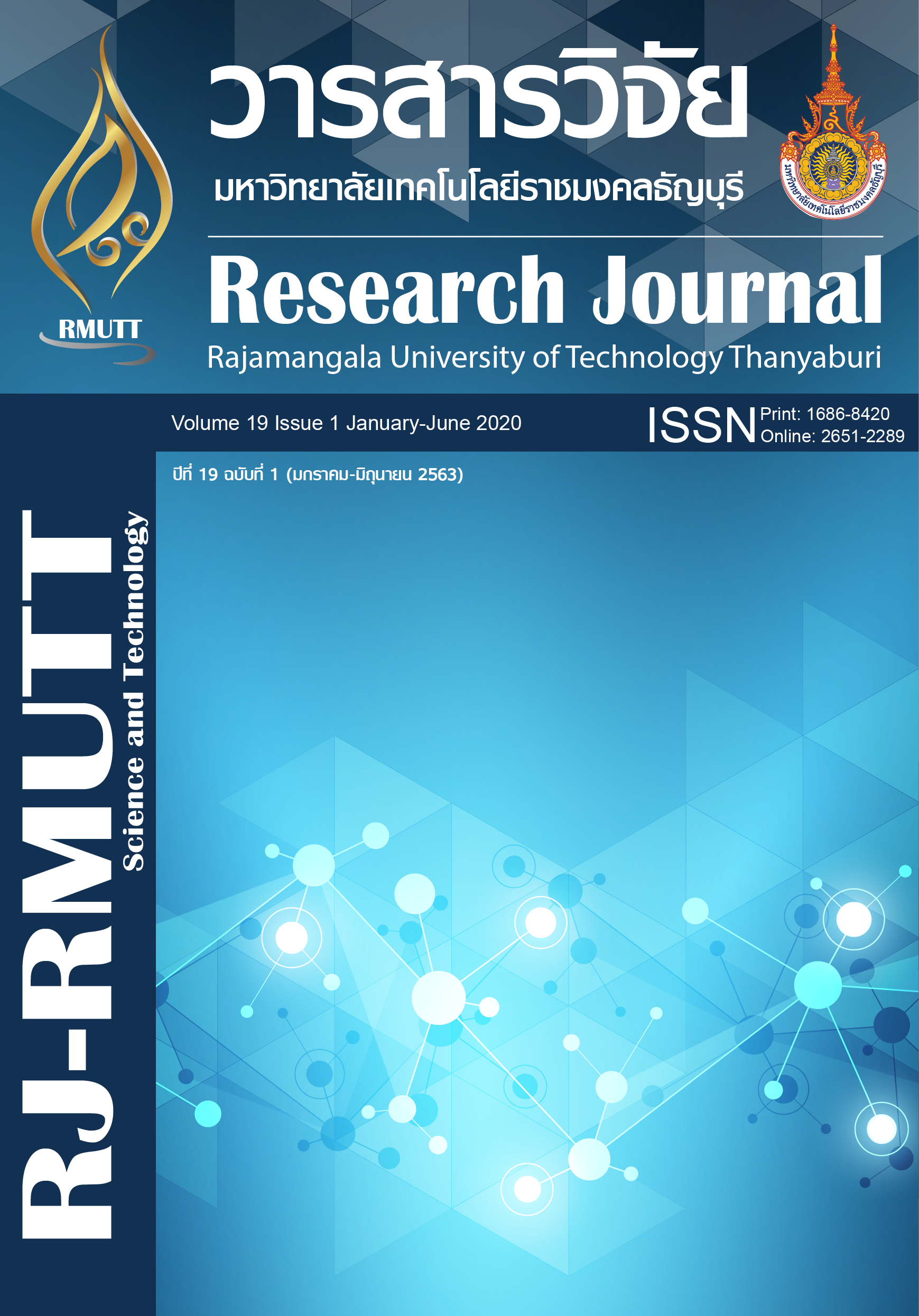Development of a Mathematical Model to Predict Soil Temperature for the Growth of Chrysanthemum Sprouts
Main Article Content
Abstract
This research is the development of a mathematical model to predict soil temperature for the growth of chrysanthemum sprouts compared with experimental results because the soil temperature affects the growth of chrysanthemum sprouts. The solar radiation panel is 55220 cm. The soil container is 1 m2 which contains 10 cm tall sprout soil. The temperature measurement of the first soil layer is attached to the heating plate below. The second soil layer is higher than the first soil layer 5cm and the third soil layer is higher than the heating unit 10 cm. The comparison of water temperature from the solar radiation panel and the water temperature in the heat accumulator tank between experiment results and mathematical models is found that the average errors are 0.1 °C and 0.17 %, respectively. In case soil temperature fluctuates with time for the second and third soil layer and the initial water temperature used each time is 40 °C and 60 °C without temperature control, which will allow the temperature to decrease naturally in order to study the increase and decrease of night-time soil temperature between the results of the experiment and mathematical models, it is discovered that the errors are 0.7 °C and 1.4 °C, respectively. When the soil properties are changed by the heat capacity, considering only the terms of Clay and Water Content and comparing the experiments with mathematical models of soils 2 and 3, it is found that the temperature have the average errors of 3.5 °C and 3.5 °C, respectively. For the case of keeping the water temperature in the heat accumulator tank constant, not changing with time, and determining the change in soil temperature in 2D form by specifying that the soil temperature in the first layer is constant at 48 °C and the air temperature is at 28 °C, all of which are as input in mathematical models. It is found that soil temperatures are obtained from the mathematical model are higher than the measured values of 0.82 °C and 2 °C of soil layer 2 and 3, respectively.
Article Details

This work is licensed under a Creative Commons Attribution-NonCommercial-NoDerivatives 4.0 International License.
References
Krutkun T. Sustainable agriculture use of soil fertilizer. 1st ed.Bangkok: Green fence; 1997.
Feungchan S. Fruit tree physiology. 1st ed. Bankok: Sirakan Offset; 1994.
Scott HD. Soil Physics: Agricultural and Environmental Applications. 1st ed. Library of Congress cut a logging Iowa State: Wiley-Blackwell; 2001.
Dardo O, Jorge L, Leonardo P. Predicting Temperature and Heat flow in a Sandy Soil by Electrical Modeling. Soil Sci Soc Am J. 2001;65(4):1074-80.
Gua YQ, Asher JB, Yano T, Momii K. Estimation of Soil Evaporation Using the Differential Temperature method. Soil Sci Soc Am J. 1999;63(6):1608-14.
Kurpaskaz S, Slipek L. Mathmatical Model of Heat and Mass Exchange in a Garden Subsoil during Warm air heating. J Agr Eng Res. 1996;65(4):305-11.
Duffie JA, Beckman WA, Solar Engineering of Thermal Processes. 2nd ed. New York: John Wiley & Son; 1991.


